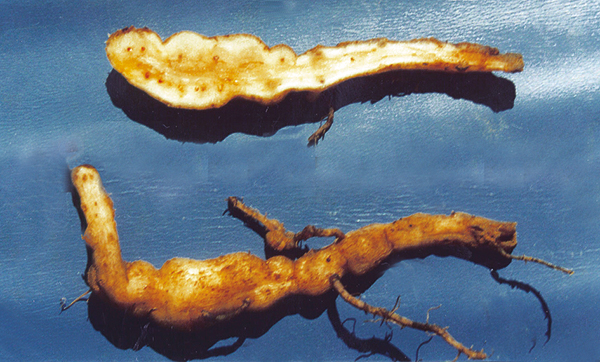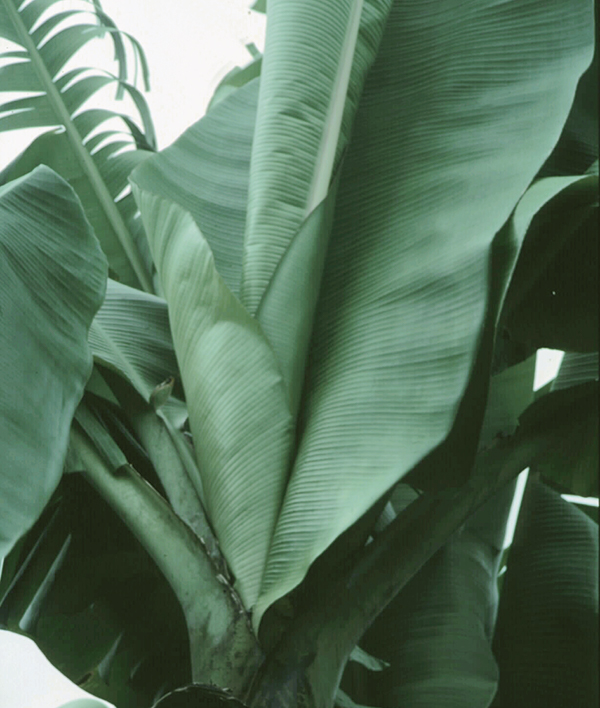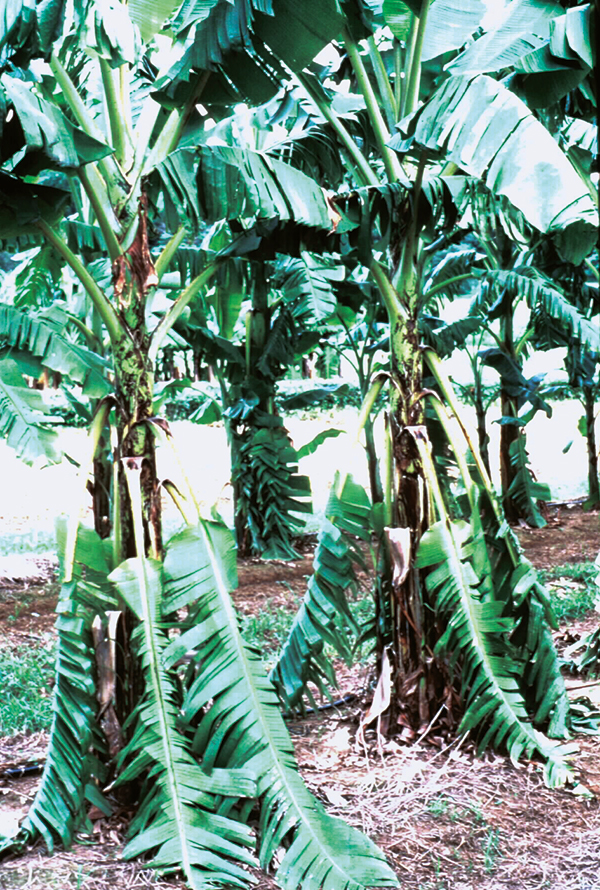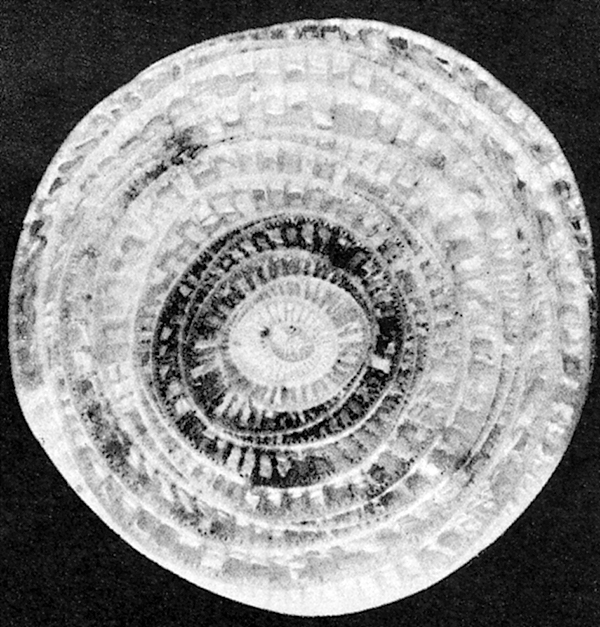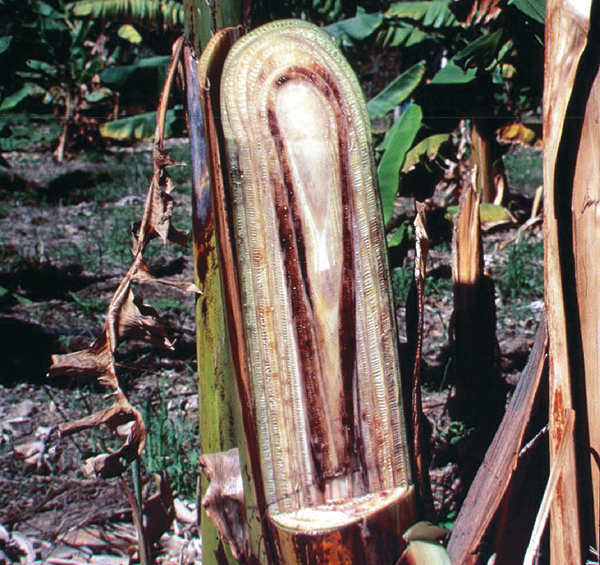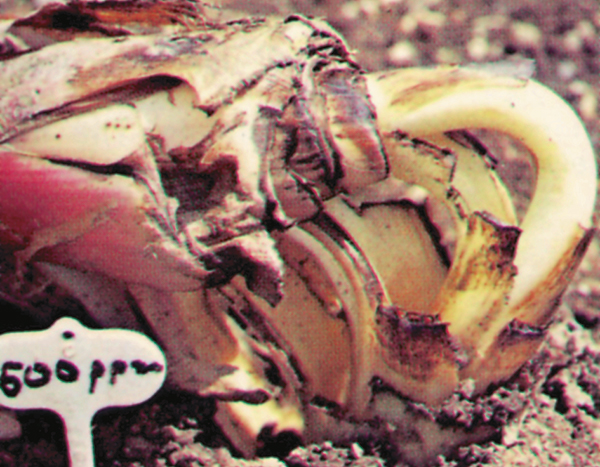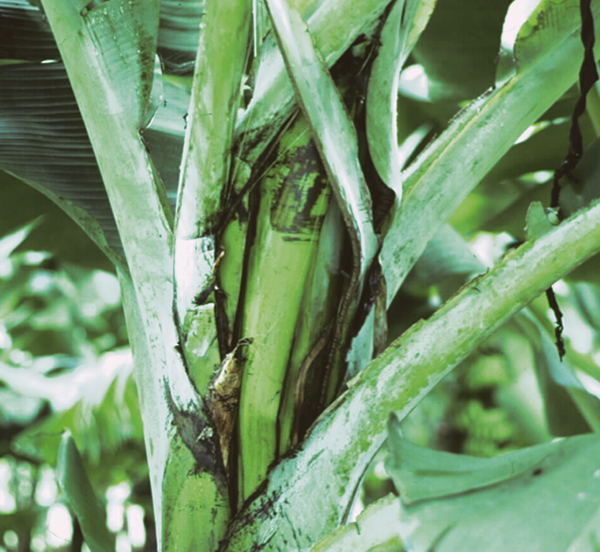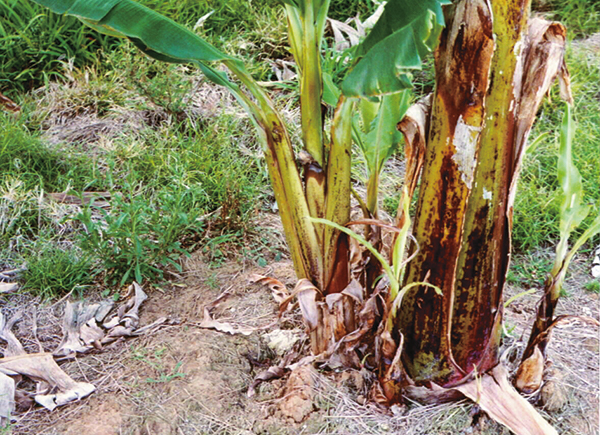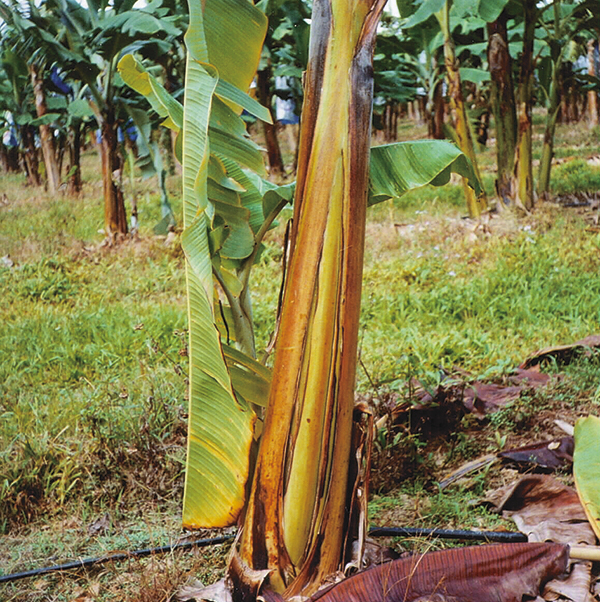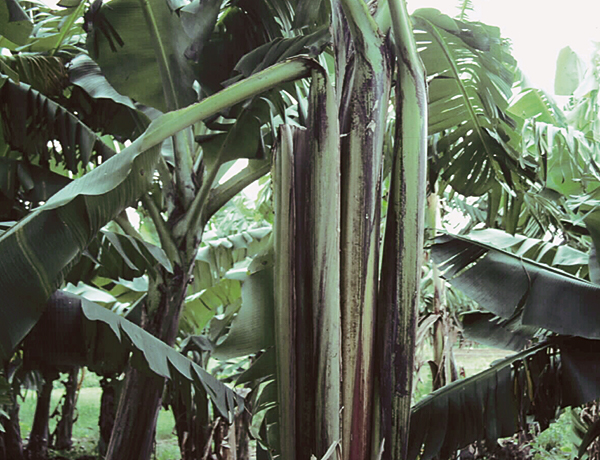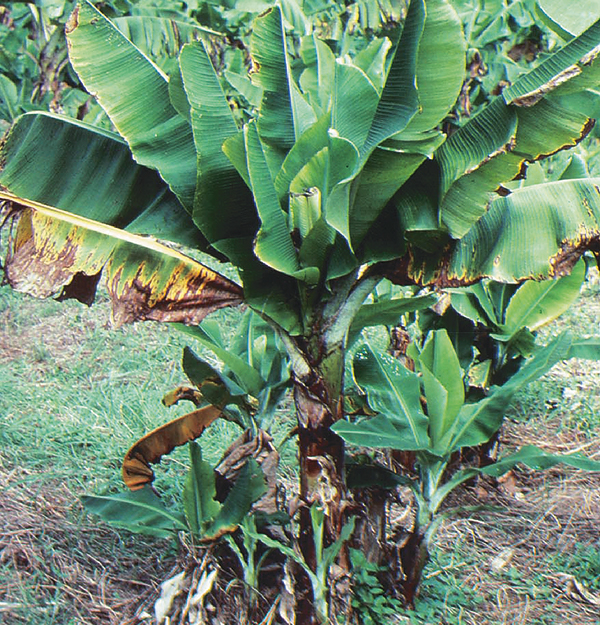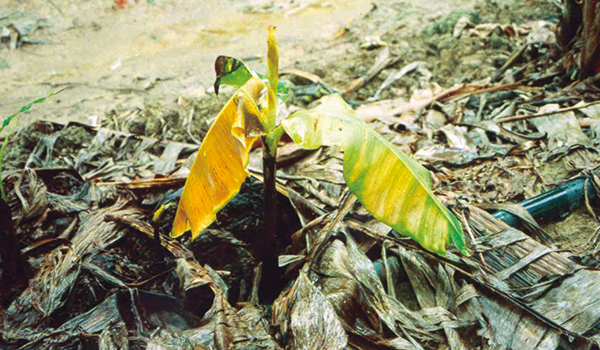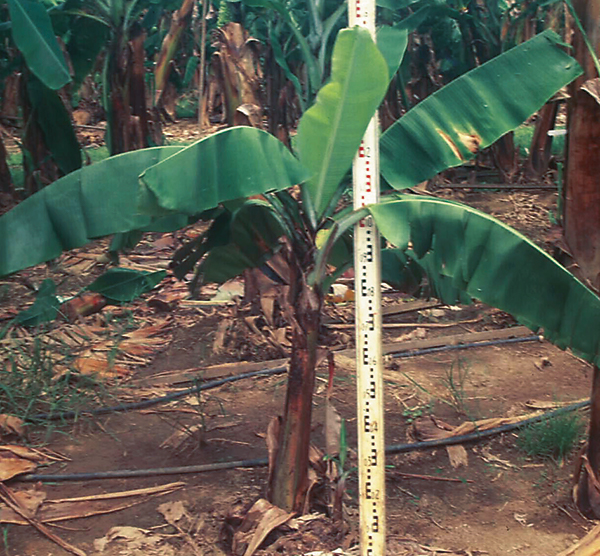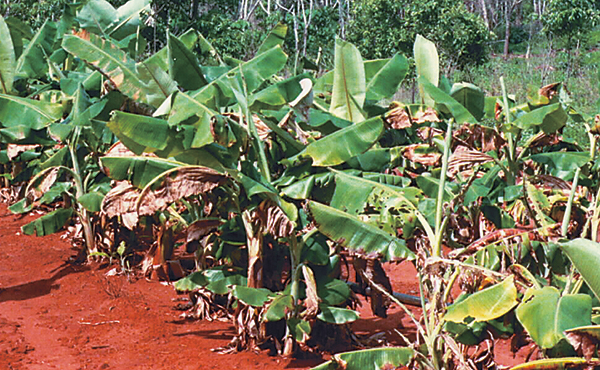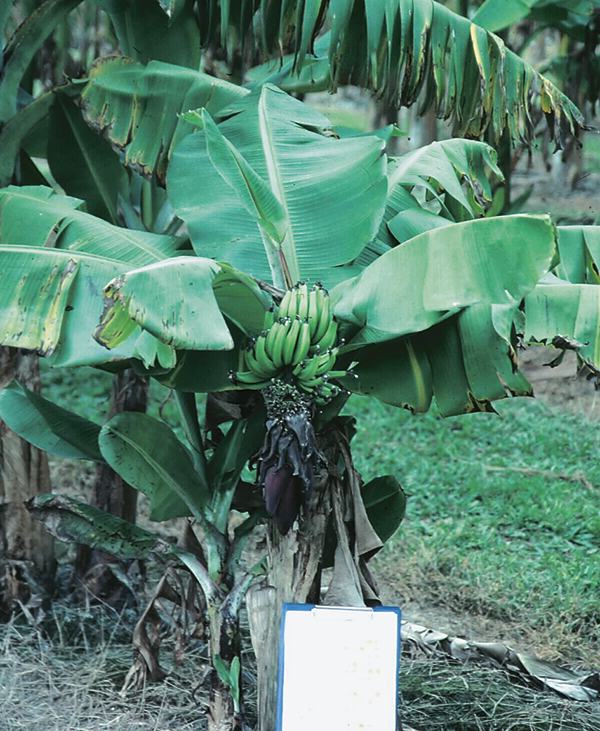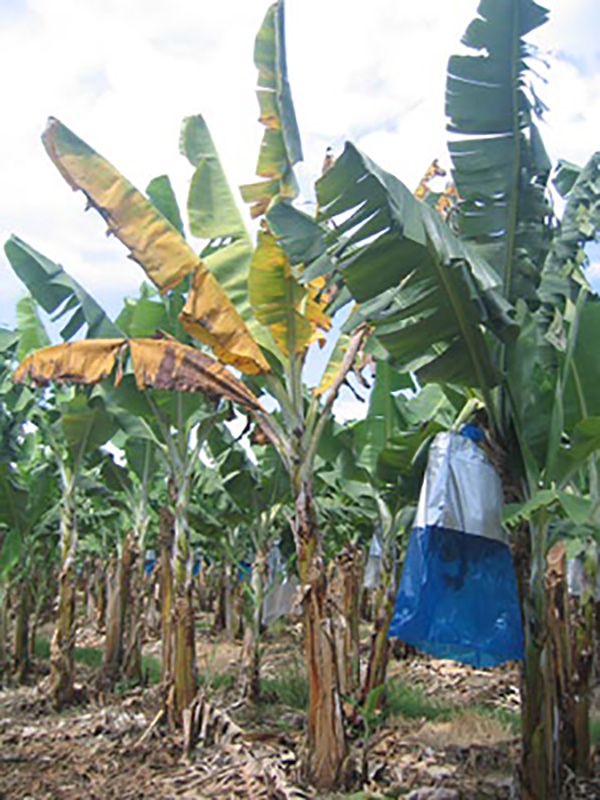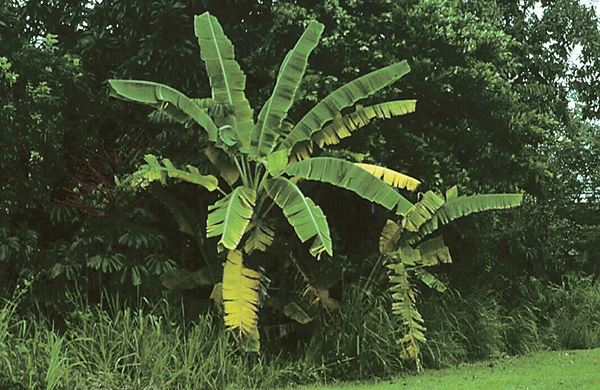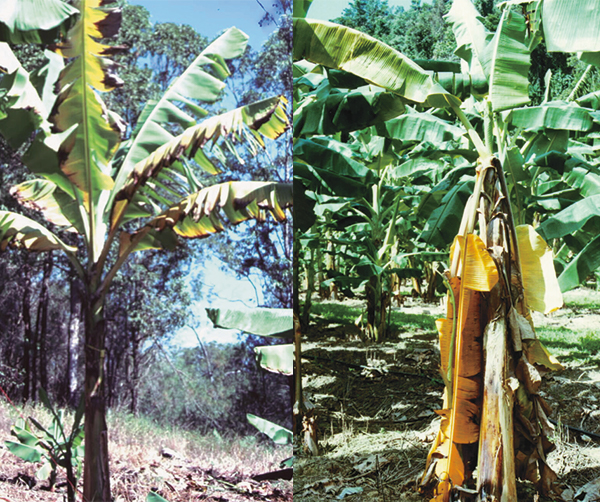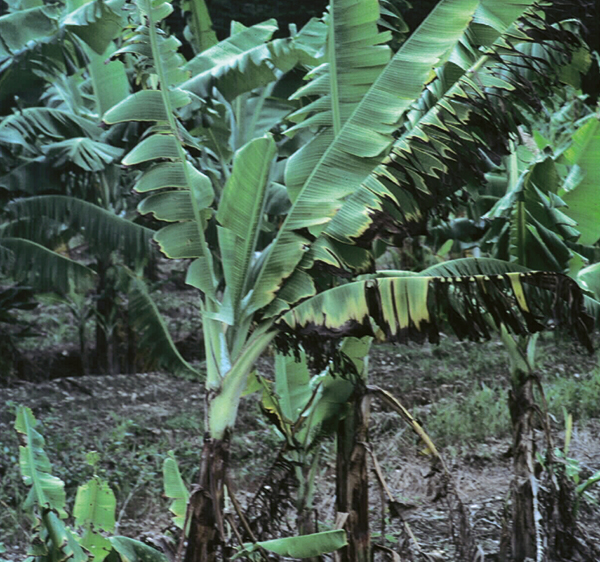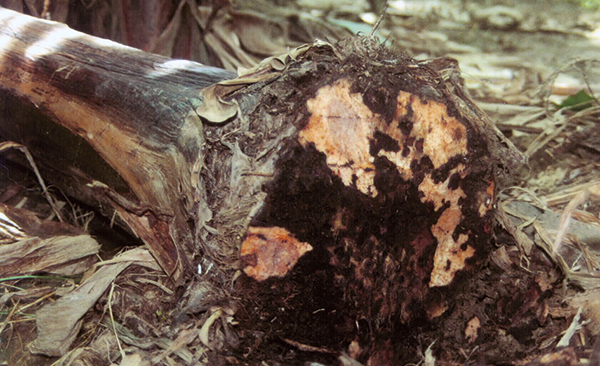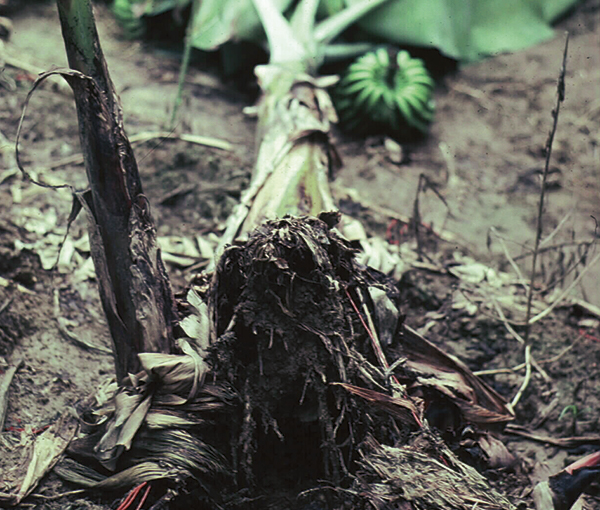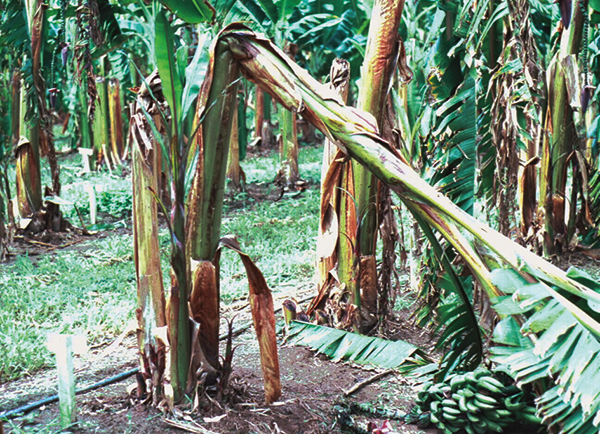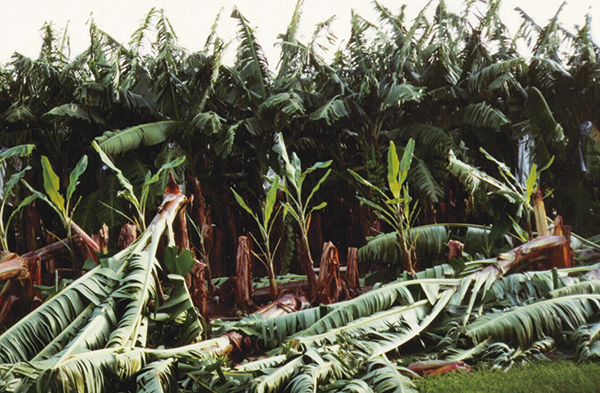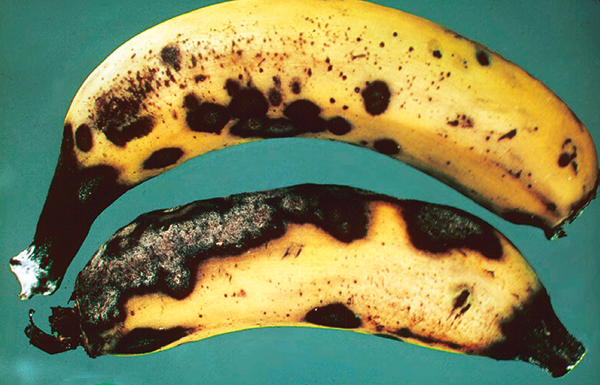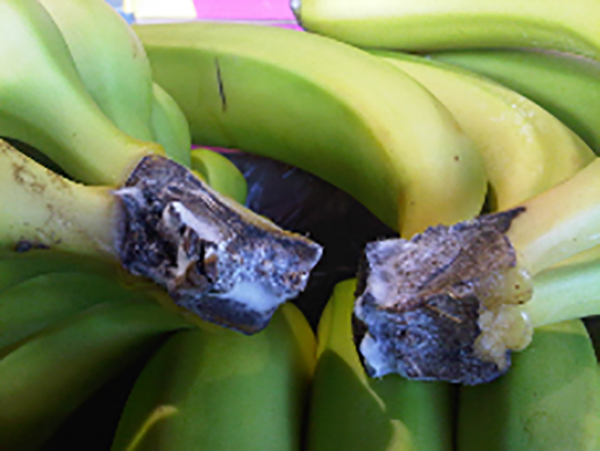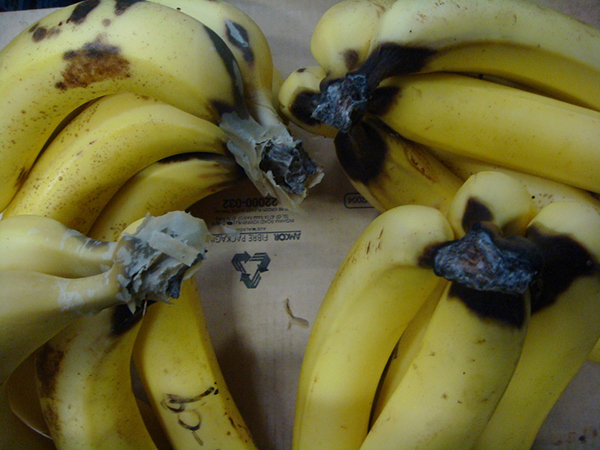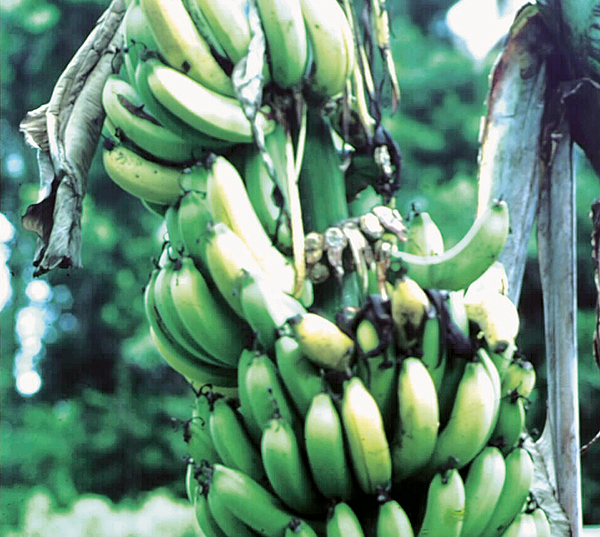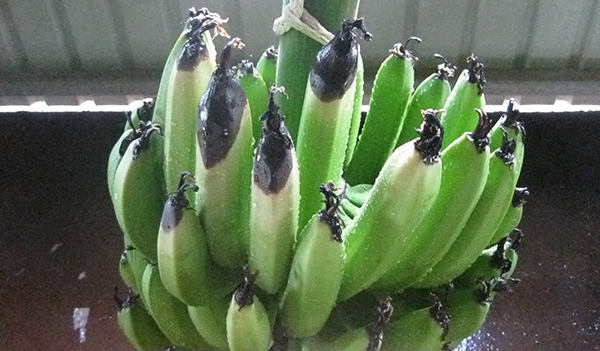Damaged roots or no root hairs
Fertiliser burn, drought or water-logging, poor drainage, air burn, soil compaction.
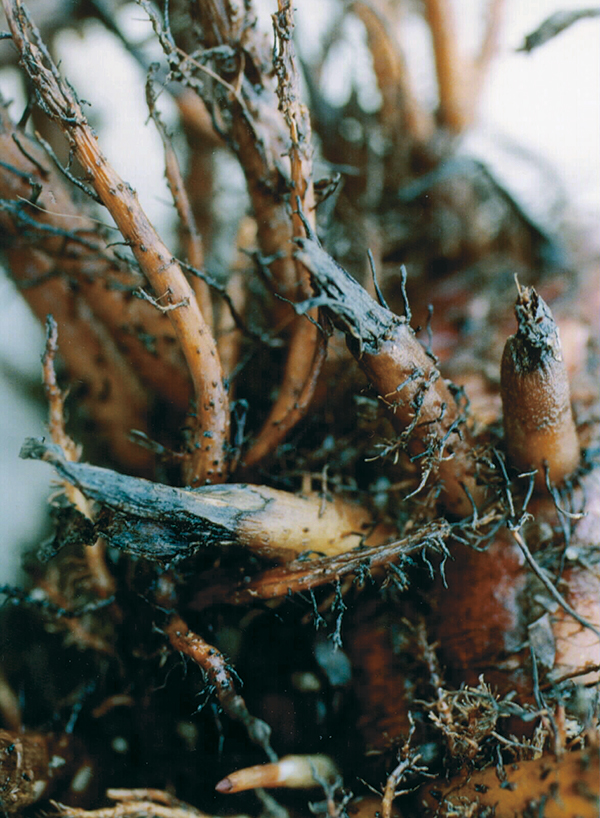
Cause: There are several causes of root tip burn. They include fertiliser burn from too much fertiliser or poor placement; aluminium or manganese toxicity caused by low soil pH; and soil drying out or staying too wet for too long. As well as these causes, air burn or soil compaction can cause root hairs to be lost.
Solution: Determine the cause with soil and tissue analyses. Broadcast fertiliser evenly and at recommended rates. Watering heavily to leach salts out of the root zone can alleviate problems of excess fertiliser. Maintain soil pH between 5 and 6 and avoid planting in areas with poorly drained soils.
Greyback cane beetle
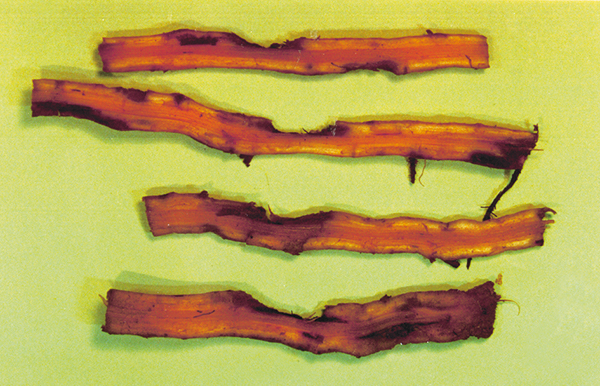
Cause: Chewing by larvae (cane grubs) of Dermolepida albohirtum.
Solution: Correct timing of insecticide application is crucial. The chemical must be applied when larvae are close to the surface between November and January.
Root-knot nematode
